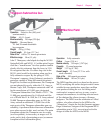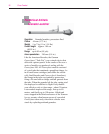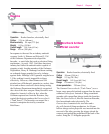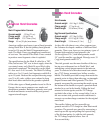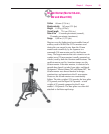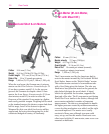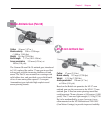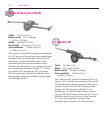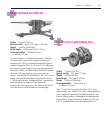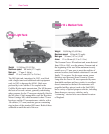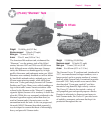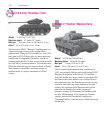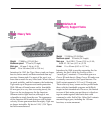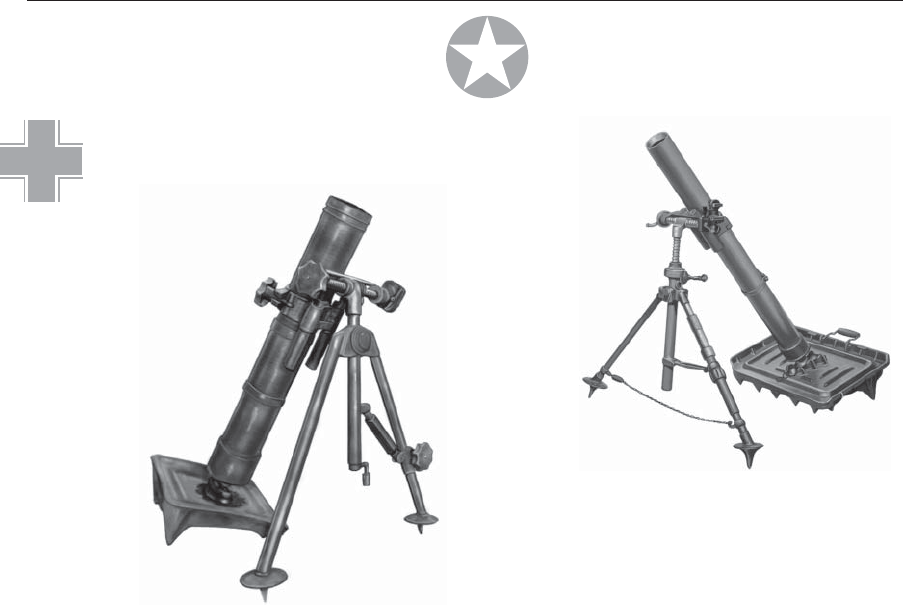
100
Close Combat
Standard and Short 8-cm Mortars
Caliber
81.4 mm (3.2 in.)
Weight
56.4 kg (124 lbs)/28.2 kg (62 lbs)
Overall length
123 cm (48 in.)/96 cm (37.8 in.)
Rate of fire
18 to 35 rounds per minute
Range
2,400 m (2,625 yds)/1,100 m (1,200 yds)
When the war began, the German army’s primary
mortar was the 8-cm Schwerer Granatenwerfer 34
(8-cm heavy mortar, model 34). As the war pro-
gressed, the Germans developed a short 81-mm
mortar, the 8-cm Kurzer Granatenwerfer 42 (8-cm
short mortar, model 42) in order to retain the
firepower of the standard 8-cm mortar in a lighter,
more easily portable weapon. Weighing half as much
as the standard mortar, this shorter weapon had about
half its range, but all of its destructive power.
Weapons like this were ideal for close-in artillery
support and for laying down harassing fire in the
constricted hedgerow country of Normandy.
81-mm Mortar (81-mm Mortar,
M1 with Mount M1)
Caliber
81 mm (3.18 in.)
Muzzle velocity
213 mps (700 fps)
Weight
61.2 kg (136 lbs)
Overall length
115.6 cm (45.5 in.)
Rate of fire
18 rounds per minute (normal),
35 rounds per minute (maximum)
Range
2,994 m (3,290 yds)
The 81-mm mortar used by the Americans had its
roots in the mortar invented by Sir Frederick Wilfrid
Scott Stokes, known as the “British Stokes” mortar.
This earlier mortar consisted of a smoothbore tube
with a fixed firing pin at the bottom. The tube was
fitted into a base plate that rested on the ground; the
plate helped dissipate the recoil shock. A bipod,
which was adjustable for elevation, supported the
front end of the tube. The 81-mm mortar used during
World War II was similar to the Stokes, although this
newer mortar embodied a number of important
improvements. The tube was strengthened to handle
the higher pressures created by modern ammunition,
a cross-leveling mechanism was added, and the sight
was much improved. The mortar crew usually
consisted of three men, although two men could
carry, set up, and fire this mortar. Hand carts were
often issued with the 81-mm mortar; some were even
mounted on halftracks.




